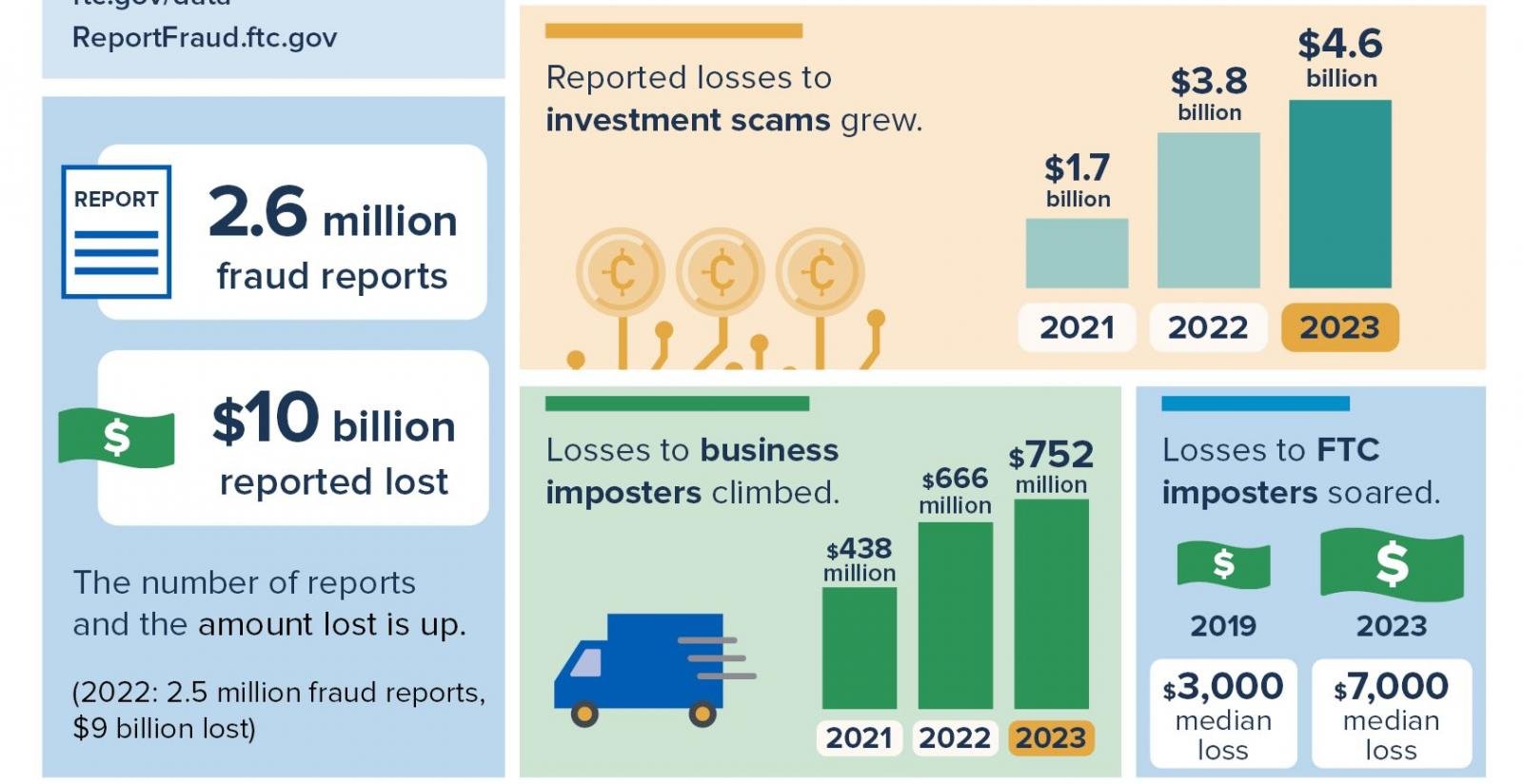
The U.S. Federal Trade Commission (FTC) says Americans over $10 billion to scammers in 2023, marking a 14% increase in reported losses compared to the previous year.
To put this into context, Chainalysis says ransomware gangs also had a record year, with ransomware payments having reached over $1.1 billion in 2023.
Over 2.6 million consumers filed fraud reports with the FTX the previous year, a figure almost identical to 2022. Imposter scams emerged as the most frequently reported fraud category, with notable upticks in business and government impersonation reports.
Following closely behind were online shopping scams, trailed by reports concerning prizes, sweepstakes, and lotteries, as well as investment scams and business or job opportunity schemes.
“Consumers reported losing more money to investment scams—more than $4.6 billion—than any other category in 2023. That amount represents a 21% increase over 2022,” the FTC said.
“The second highest reported loss amount came from imposter scams, with losses of nearly $2.7 billion reported. In 2023, consumers reported losing more money to bank transfers and cryptocurrency than all other methods combined.”

The FTC added 5.4 million consumer reports to its Consumer Sentinel Network (Sentinel) secure online database last year, with more than 1.1 million reports of identity theft received through the agency’s IdentityTheft.gov website.
However, the data shared today by the FTC reflects just a fraction of the actual harm inflicted by scammers in 2023 since most frauds are never reported.
Those who fell victim to fraud can report incidents at ReportFraud.ftc.gov or file identity theft reports at IdentityTheft.gov.
After being included in the FTC’s Sentinel database, the reports are made available to roughly 2,800 federal, state, local, and international law enforcement professionals. They help investigators track down fraudsters, making it easier to discover trends and educate the public against scam attempts.
A full breakdown of reports received in 2023, including state and metropolitan area stats, can be found on the FTC’s data analysis site at ftc.gov/exploredata.
“Digital tools are making it easier than ever to target hard-working Americans, and we see the effects of that in the data we’re releasing today,” said Samuel Levine, Director of the FTC’s Bureau of Consumer Protection.

